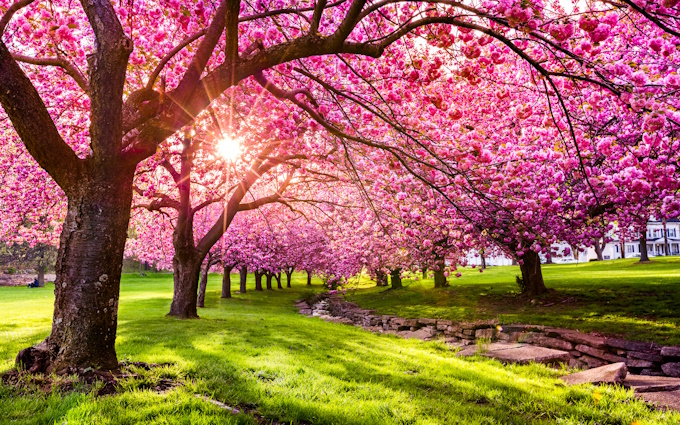Care For Your Trees Like a Certified Arborist by Employing These Best Practices
The dormant season is officially over, which means your deciduous trees have awakened from their long winter’s nap and are actively seeking nutrients again. Many trees, such as magnolia, cherry blossom, and crabapple trees, are already budding and flowering.
As any certified arborist in Kansas City will tell you, spring is one of the most pivotal points for tree care because it marks a new growth cycle. Proper care during these early blooming stages will significantly impact tree health, growth, and longevity.
Whether you’re a seasoned gardener or a new homeowner entering their first season of tree care, the following tips and best practices will help support them while preventing challenges like tree sickness and invasive pests.
Inspect Your Trees
Start by performing a thorough inspection of your trees. Look for signs of damage, disease, fungi, rot, and anything out of the ordinary. Early detection can prevent the problem from growing into something more serious. If you notice any signs of disease, consider consulting a certified arborist near you for a diagnosis and treatment plan. The sooner you identify the issue, the more likely you can rehabilitate the tree back to full health.
Strategically Prune Like an Arborist
Spring is an ideal time for pruning because it’s easy to tell which branches are healthy and which ones are dead weight. Pruning also helps shape the tree, encourages healthy growth, and allows more sunlight into the canopy. Keep the following in mind when pruning:
- Only remove branches that are dead, diseased, or pose a safety hazard.
- Avoid heavy pruning that can stress the tree.
- Use clean, sharp tools so that your cuts are precise. Loppers are ideal for pruning.
- When removing a dead limb, avoid cutting too close to the trunk.
If the size of your trees poses a challenge, or you don’t have the tools or the time to do the job, consider hiring a certified arborist or tree surgeon.
Fertilize Your Trees
Your trees require nutrients to grow and thrive, and applying the right fertilizer helps them out in a big way. Fertilizers break down into two categories: organic and inorganic. Organic fertilizers are made from naturally occurring materials and release essential nutrients as they break down. Inorganic fertilizers are packed with nutrients that will reach the root system fast, but their composition does nothing for your soil and carries the risk of toxic overdose.
In the great organic versus inorganic fertilizer debate, it’s akin to comparing a fast-food cheeseburger to a slow-smoked organic brisket. The fast-food cheeseburger is a quick and cheap solution, but it’s not good for you in the long run. The brisket is more expensive and takes more time, but it’s a higher quality food that isn’t packed with chemicals.
Water Wisely
While spring often brings increased rainfall, monitoring soil moisture levels is crucial, especially for young or newly planted trees.
Employ the following watering tips:
- Only water the area directly under the tree’s canopy.
- Water deeply and evenly so that moisture reaches the tree’s root system.
- Water first thing in the morning or around sunset to reduce water loss due to evaporation.
- Do not water the leaves or the trunk, as this can lead to pest and disease issues.
- Use a soaker hose or drip irrigation to apply water directly to the root zone.
- Water two to three times per week.
Contact an arborist in Kansas City about watering schedules and best practices for your specific species and age of tree.
Add a Layer of Mulch
Applying a thin layer of mulch around the base of your trees provides numerous benefits. Most notably, mulch helps retain soil moisture, regulates soil temperature, and suppresses weed growth. Like fertilizer, mulch is available in organic and inorganic varieties.
Organic mulch is made from pine needles, grass clippings, tree bark, leaves, and other naturally occurring elements that enrich the soil as they break down. Inorganic mulch, on the other hand, is made from plastic, rubber, or decorative rocks. Granted, inorganic mulch will block weed growth, but they won’t improve soil health.
Be sure to avoid “volcano mulching,” the act of piling up mulch high around the trunk of a young tree. Volcano mulching prevents proper root development and can encourage pests and disease to develop.
Contact an Arborist Near You for Professional Spring Tree Care
By following these tree care tips and best practices, you will establish the foundation for healthy, vigorous trees that will enhance your landscape and curb appeal. Remember, the care you provide during these early stages of blooming will make all the difference in the overall health and beauty of your crabapple, cherry blossom, and flowering dogwood trees.
Start today by performing an inspection of your trees. Should you see anything out of the ordinary or require assistance with spring tree care tasks, contact an arborist or tree surgeon. These professionals can perform all the basic services discussed in this blog. Plus, they perform advanced tree care services, such as tree rehabilitation, tree removal, and emergency tree care services for trees that have been uprooted or damaged during storms.

